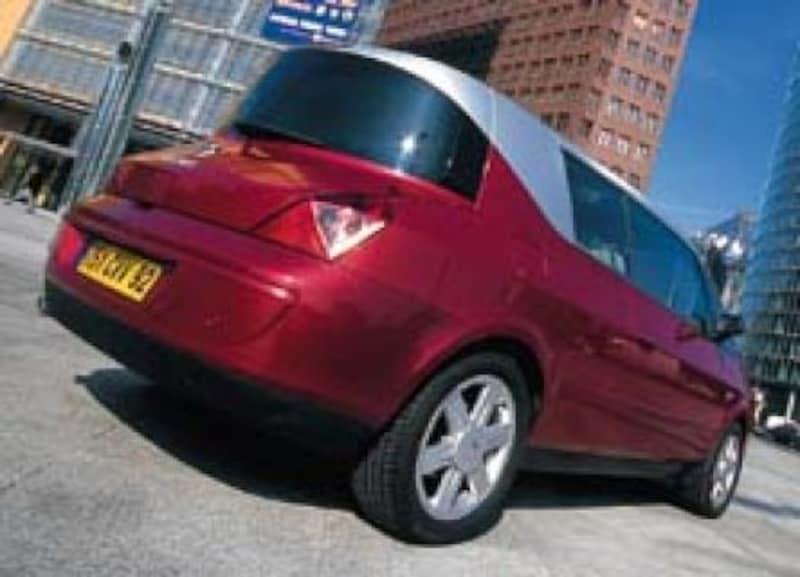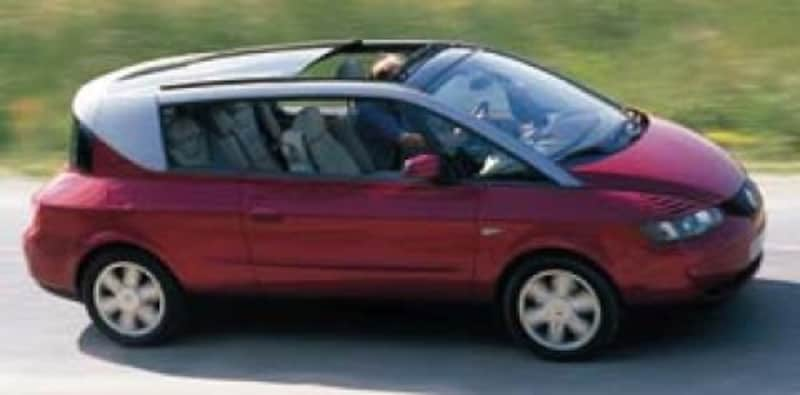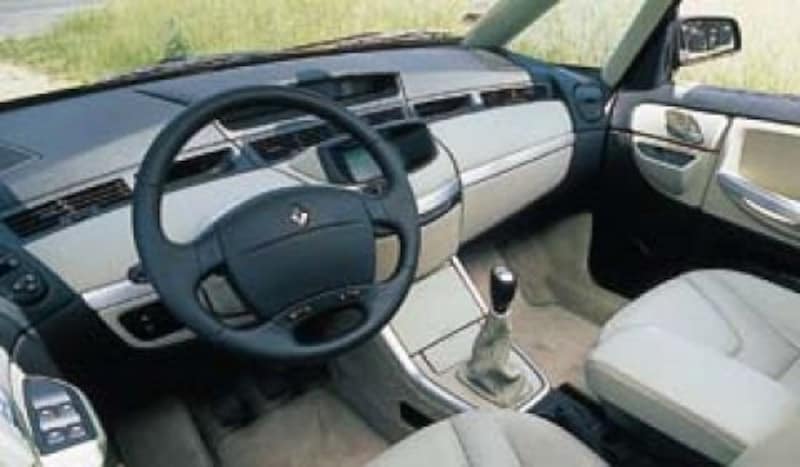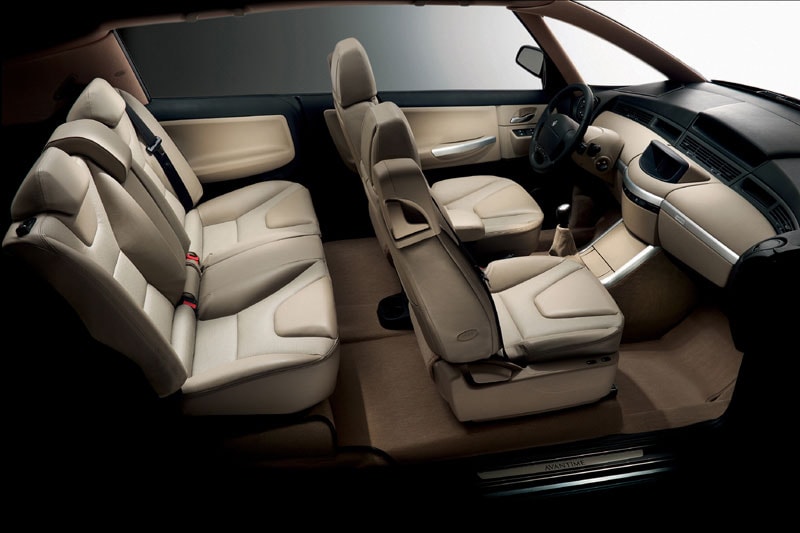Select group of cars has that


Cars that are labeled as classics immediately upon arrival are rare. If there are any, they come from the exclusive brands – and then only when it comes to limited editions. But the Renault Avantime also belongs to that select group.
With its special design and unique concept, the Renault Avantime, whose production started twenty years ago, was an instant classic. It also became a limited edition – albeit against will and thanks. The history of the model can be read as a failure that unfolds in a slow motion of 22 months. The story starts with the idea that often bubbles up in French brands: now finally to attack the German top class. At the beginning of the millennium, that plan of attack covered three models at Renault. First of all, there was the fourth generation Espace, which was positioned a bit higher in the market than the previous one. Together with the Vel Satis, a baroque styled limousine with a slightly higher build, it was supposed to breathe new life into the classic French Grande Routière. The third pillar was a niche: a three-door MPV, which had to link the driving experience of a coupé to the light and spacious character of an MPV.
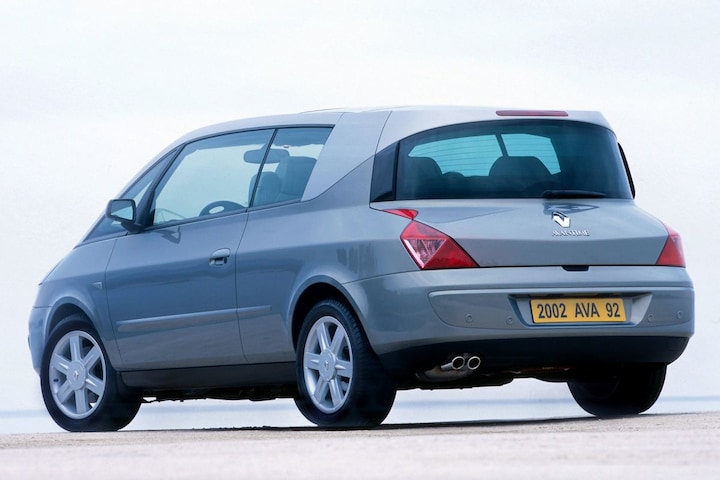
The first impetus is given at the Geneva Motor Show in 1999. There is the Avantime study model, the concept of which was called coupéspace. According to Renault, the ‘missing link’ between the MPV and the coupe. Matra, which has been building the Renault Espace from the start, has developed and built the car. And if you search long enough, there is a target group for every niche. Renault indicates two in Geneva. First of all, the people who grew up in an Espace and are not yet ready for a full-fledged family car, but are looking for the light and space that this car offers. There are also the ’empty nesters’: elderly people who have driven an Espace as a family car for a lifetime, now no longer need the space but still do not want to miss the characteristics of the MPV.

Renault Avantime as a concept in 1999, find the differences with the later production version!
Pronounce Avantime in English
And just to be clear: with Avantime you pronounce ‘time’ in English, ‘because that is not a French concept after all’. The meaning of the name should be clear: avant is French for ‘before’ – so the Avantime had to be ahead of its time.
Two years later, in June 2001, production of the Avantime started at the Matra factory in Romorantin-Lanthenay. During the development from concept car to production car, meeting the safety standards for the B-pillarless roof is the biggest stumbling block. But there are more reasons why it takes so long for the Avantime to be ready for production. The concept car has huge doors that open at a wide angle. If they go directly into production, it will be impossible for the Avantime owner to get out of his car in a pocket. That is why Renault is developing the double hinge. In the production car, the door opens to a remarkably small angle. The development and production of that hinge is a real headache. Then there is the panoramic roof that shatters on several prototypes when driving on bad roads. The concept therefore needs a lot of attention before it can be put into production. That happens later than planned.

Avantime as a make-up for Matra
You could say that the Avantime is a make-up for the Matra factory. The Renault Espace has been rolling off the production line there since 1984 – after all, it was developed by Matra itself. However, the fourth generation Espace, which will be launched in 2002, will be built by Renault itself in Sandouville. The reason for this is that the Espace uses the full capacity of the Matra factory. If the new Espace wants to score higher sales figures, Renault will have to take production into its own hands. Now the adventure for Matra starts again with a self-invented concept and a self-developed car. To save costs, Renault technically bases the Avantime on the third generation Espace, which Matra has been building since 1994. Half of the parts are interchangeable with those of the old Espace. All parts of the interior and body are unique to the Avantime. But you don’t just exchange chassis components such as springs and dampers either.
Patrick le Quément designer of Avantime
The design of the Avantime is by Patrick le Quément, who has left his mark on Renault designs since the 1990s. He is responsible for the first Twingo and the equally cuddly Kangoo of the first generation. Before he starts his job at Renault, he has some hard requirements. Le Quément does not want to design a car around technology and he has a whole horde of consultants removed from the design department. It will be replaced by 350 designers, doubling the team. Moreover, Le Quément only does business with the CEO himself. In short: he shakes off the bookkeepers. In the case of the Twingo and the Kangoo, his bursts of creativity led to great success. With the Avantime it’s a completely different story.
Each one a kind of prototype
The sales of the new non-conformist Renault do not get off the ground at all. The fact that the Vel Satis is also new on the market is perhaps the main reason for this. The main competitor comes from our own home. But attacking the German top class is also not very successful, after all, Renault’s ambition. Where German cars are put together correctly down to the last detail, you can say that every Avantime is a prototype at best. Of course, quality does improve over time, but once a bad reputation is established, you can never get rid of it. And to be fair: the Avantime has never become perfect. Electronic malfunctions and loose parts are the order of the day. The large glass surfaces and the panoramic roofs may be characteristic and innovative, but the construction creaks like a delight and the windows rarely close completely straight. In addition, the materials in the interior breathe little ‘premium’ quality. Customers find the dashboard, for example, too similar to that of the Espace – from the previous generation, that is.

But above all, the public cannot get used to the concept of the coupe space. Users cite the fact that the car only has two doors as the biggest shortcoming, while that is precisely the great asset of the concept. Moreover, no one can recognize themselves in the rather sought-after target groups that Renault has devised for the Avantime. Renault has set annual production at an already very modest 15,000. But after a year of production, the counter does not exceed 3,900.

Avantime starts with V6
Due to the poor sales of the Avantime, Matra is immediately watered. Because another project to fill the void of the Espace, the production of the Matra M72, is not getting off the ground at the factory in the Loire Valley. However, the complete introduction of the Avantime is not over yet. In the first year, only the 3.0-litre V6 petrol engine with a manual transmission is available. In the Netherlands it is in the price list for €43,000. In April 2002, a 2.0-liter turbo engine completes the program, which makes the Avantime more affordable. Moreover, from then on you can also opt for a five-speed automatic transmission with the six-cylinder, which fits the character of the Avantime V6 a lot better. For the French market, obviously the most important for this Renault, a diesel is vital. The diesel thirst is quenched from June 2002 with the arrival of the 2.2 dCi. This completes the program and makes the Avantime more financially accessible and usable for a larger target group. But even so, the Avantime is still expensive compared to the German competition. To breathe new life into the model, there will also be an Expression version. In that basic version with the two-liter turbo, for example, the panoramic roof has been deleted. Less characteristic perhaps, but the price does drop to €35,000.

It’s all to no avail. The sale of the Avantime does not go smoothly and pushes Matra to ruin. At the end of February 2003, Renault announced the closure of the factory. The management says it does not want to continue production in its own factory. And with that, the fate of the world’s only coupe MPV is sealed. In May 2003, after 22 months of production, the last Avantime comes off the band. Production remains at 8,557 copies. Of these, 4,000 went to foreign markets; in the Netherlands, the model only attracts 218 buyers.

The butt went to the Megane II
Was the whole project for nothing? No. Patrick le Quément rumbles on on the chosen path. The design with which the Avantime set the trend can be found on the second generation Mégane, the one with the butt. The convex rear window with the fake air vents next to it also had the Avantime. Le Quément later says about the Mégane II that it was ‘too much of a good thing’; that car was not a commercial success either. The second generation Scénic is designed in the same direction; the rear of that MPV is also very reminiscent of the Avantime. Nevertheless, the Renault Avantime will go down in history as one of the biggest flops in the car world. A coupé MPV was too far ahead of its time – a time that has never come since.

Antoine Kortekaas in the back of his Renault Avantime.
Two years ago we had a rendezvous with a Dutch Avantime driver Antoine Kortekaas for AutoWeek Classics:
Antoine Kortekaas likes to demonstrate the space and the light in the back seat of his Avantime. He bought it when it was four years old with 100,000 kilometers on the clock. “I drove a Renault Alpine Turbo at the time. It came to a smoking stop because the fuse box was melting. Then I lost confidence in that car and bought this Avantime from the dealer. The fact that we could easily accommodate our then small children in it was also a nice bonus. I wanted a family car that was not your average. My car is a Privilège version. The only option is the black and blue leather upholstery. Special about the Privilège is the ‘Grand Air’ option. This allows me to open all the windows and the roof at the touch of a button. Then you feel like you are driving a convertible.”
Antoines Avantime is taken care of down to the last detail. He even went so far as to have the plastic in the interior made sticky-free. “That’s where the plasticizers came from. Every time you sat with your pants against the console, a blue stain appeared in it.”
Before we open another can of prejudice about the Avantime: that ailment is common in many cars of this age, including Lexus. The only non-original thing we can discover about the car are the striking double tailpipes on the exhaust. “Renault has delivered all parts neatly for ten years, but now there is nothing left to get. That really has to come from the hobby circuit. In the Netherlands, for example, there is the Avantimevrienden movement for this. The exhaust is therefore made of stainless steel and I opted for these tailpipes.” In the years that Antoine has owned his Avantime, he has put 70,000 kilometers on the clock.
Not everything about the Avantime is doom and gloom. The tranquility on board while driving and the pleasant steering are the most often praised features. We think it would be wonderful to float south on the Autoroute and drive ‘Grand Air’ along the lavender fields. Antoine: “But I only use it as a family car for the weekend, although we also took it to the Ardennes once …”
.
– Thanks for information from Autoweek.nl

